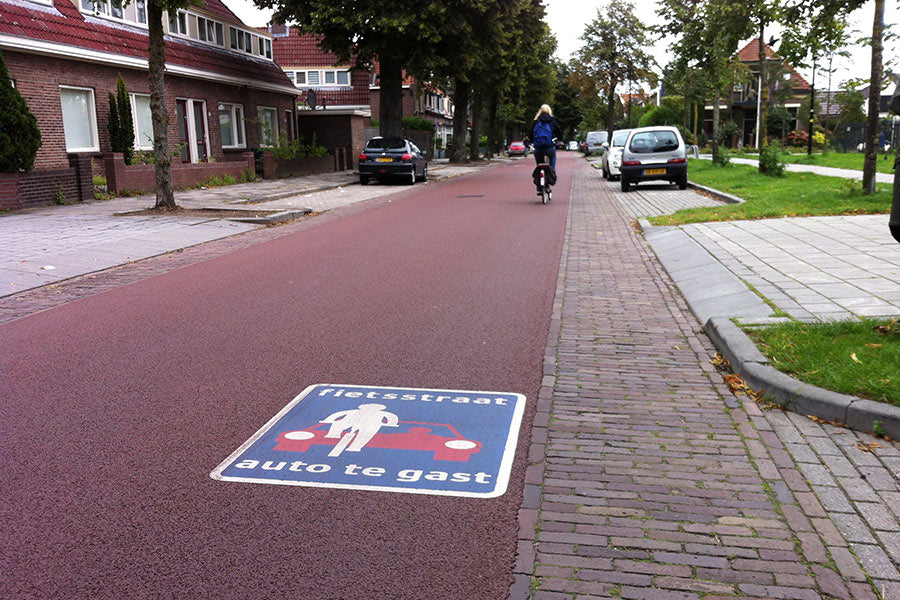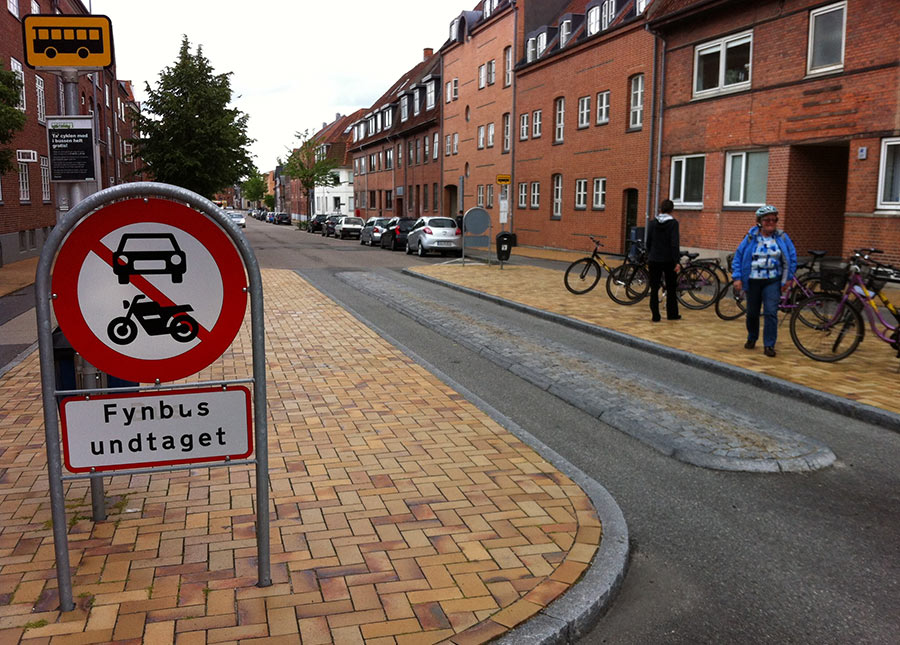Anyone who has spent any time in and around bicycle advocacy has seen a variety of “movements” rise-up to address certain issues of the time. Share the Road. Critical Mass. Bicycle-Friendly. Complete Streets. But a new philosophy has traveled over from Europe and sprung up in US cities that has me more excited for dramatic and lasting change than any of our previous efforts. It is a more nuanced, data-driven, collaborative, and multidisciplinary approach to making our cities, communities and neighborhoods better places to live, work, and play. At its core, it’s about focusing on safety for all citizens no matter how they choose to travel into, out and through their communities. A safe city is a healthy city. A safe city is a vibrant city. A safe city is a productive city. And a safe city is a Vision Zero city.
Safe spaces for all modes is Vision Zero; Queens, NYC.
There is no such thing as a traffic “accident”. Every single crash that results in a significant injury or fatality is preventable. An import from Sweden, Vision Zero is a belief that cities should be able to achieve zero traffic deaths and serious injuries. That every person has the right and expectation to safely travel, regardless of mode, in their cities. A key to the hope that Vision Zero will have sustained success is that it is a multi-departmental, collaborative approach. Utilizing the expertise and experience of several city departments that are stakeholders for safe streets, the likelihood for transformative change increases dramatically. The process of involving officials from various departments such as Public Works, Transportation, Engineering, Parks, and Police/Public Safely brings these folks out of their silos and into solving the problem of unsafe streets.
A common misperception is that Vision Zero is a replacement for another advocacy movement, Complete Streets. This is not true, as Vision Zero builds on the design-focused elements of Complete Streets. Complete Streets is a design philosophy that uses traffic calming, protected bike lanes and intersections, pedestrian zones, and activated public spaces to create predictable behavior among the different modes of transit sharing our city streets. Vision Zero takes these principles and adds equity, enforcement, and education to the conversation. Using data and an inclusive approach, it asks the questions: Are poorer neighborhoods less safe than affluent neighborhoods? What is the link between inequity and traffic enforcement? Is our investment in infrastructure and street improvements being shared by all members of our community? 
The right to safely park your bike is Vision Zero; Pearl St, Denver.
Using transportation, namely eliminating preventable crashes on our streets, to create great cities and address underling social issues is truly revolutionary. And Saris wants to support this movement anyway we can. Our current and future product development will focus on assisting those leading the Vision Zero movement with tools and products to help them achieve their goals of zero transportation injuries and fatalities. Stay tuned for some exciting new products that were born out of our desire to create safe places for all users of our streets. We believe in the power of the bike. But that power is only realized and unleashed if the experience is safe and enjoyable.
Please visit and support our friends over at the Vision Zero Network: http://visionzeronetwork.org/
Vision Zero: A Vision of the Future
